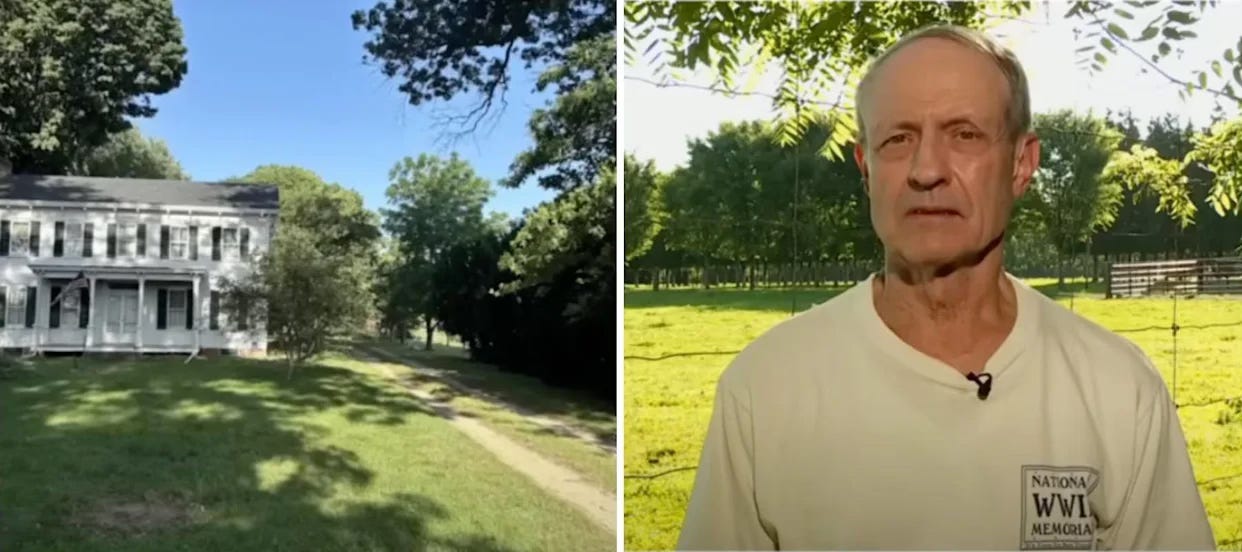Cranbury Blinks: After Outcry, a New Jersey Town Rethinks Bulldozing a 175-Year-Old Family Farm
After protests, lawsuits, and a very public warning from Washington, Cranbury Township says it may pull the Henry family farm out of its affordable-housing plan.
The quick version
Cranbury officials are now signaling they could remove the Henry family’s 175-year-old farm (1234 S. River Road)from their Fourth-Round affordable-housing plan. That shift follows months of public backlash and multiple lawsuits—and, critically, a letter from USDA Secretary Brooke Rollins warning that converting NRCS-certified “prime farmland” with federal money in the mix could violate federal law and imperil future funding. NJ.com framed the moment bluntly: the town that “wanted to bulldoze [a] historic family farm” is having second thoughts.
What changed last week
In a September 9 update, Cranbury’s mayor asked residents to comment on a state HMFA rule and said the township aims to petition for an amendment that would “potentially remove 1234 S. River Road from our plan.” The push revolves around PRN 2025-087, a proposed 250-foot warehouse buffer that, as written, blocks an alternative site the township says qualifies for federal 9% tax credits and has a willing seller. If HMFA clarifies the rule, town leaders argue, Cranbury could swap out the farm for that alternative without risking its housing obligations.
How federal pressure altered the calculus
This fight turned when USDA stepped in. In late June, Secretary Brooke Rollins publicly said she’d contacted the family and signed a letter urging Cranbury to halt the seizure. Coverage of that letter highlighted two pressure points: (1) NRCS has certified the site as 100% prime farmland, and (2) if any project partners tap federal funds, farmland-protection rules apply—and non-compliance could jeopardize existing or future federal assistance. That’s not a symbolic warning; it goes to the money and timelines that make affordable-housing deals pencil.
Under the Farmland Protection Policy Act (FPPA), projects that convert farmland and are completed by or with the assistance of a federal agency must undergo a farmland-conversion impact rating (Form AD-1006) and consider alternatives. HUD’s environmental review framework also routes HUD-assisted housing through that FPPA checklist. Many LIHTC projects braid state-allocated tax credits with HUD or other federal sources, which is why a USDA letter flagging FPPA risk lands hard with local sponsors and financing partners.
Wait—why was the farm chosen in the first place?
Mount Laurel obligations and the dreaded builder’s-remedy lawsuit risk. Like other New Jersey towns, Cranbury must zone for its “fair share” of affordable units. Officials argued this spring that adding 100% affordable sites—one of them the Henry farm—was the safest way to satisfy quotas and fend off developer lawsuits that can override local zoning. That rationale drove the initial selection even as residents protested turning active farmland—ringed by warehouses—into housing. (NJ.com’s latest coverage of the reversal underscores how far the politics have moved.)
The legal flank: everyone to court
On August 30, the Henrys challenged Cranbury’s plan in court. In an unusual twist, Cranbury Housing Associates (the nonprofit that’s long helped the township meet its quotas) and Fair Share Housing Center also filed challenges. A state-appointed mediation panel now has until year-end to try to hammer out a resolution before issues return to court. The multi-front litigation signaled fragility in the township’s plan—and added pressure to find a substitute site.
Why “prime farmland” is a tripwire for housing finance
FPPA doesn’t let USDA regulate private land use. But it does require federal agencies to avoid unnecessary farmland conversion when their dollars or approvals are involved, and to document why a given site is the least-damage option. That review is a speed bump at best and a roadblock at worst—especially if a deal’s competitiveness for 9% LIHTCdepends on staying on schedule. Cranbury’s own letter to residents telegraphed the financing stakes, warning that costly land acquisitions that don’t qualify for tax credits would jack up local costs. The farm’s “prime” designation, plus federal dollars anywhere in the capital stack, makes the path through FPPA narrower—and riskier—for builders and officials.
The politics: from “bulldoze it” to “find another way”
Public sentiment, media attention, and a cabinet secretary’s megaphone combined to flip the narrative. NJ.com splashed the rethink; network affiliates amplified it; and housing-policy watchers openly predicted Cranbury would back off eminent domain. In small towns, those signals matter—especially when they’re paired with concrete state-level fixes (like HMFA clarifying the warehouse-buffer rule) that give officials a viable Plan B.
What to watch next
HMFA rulemaking. If HMFA refines PRN 2025-087, Cranbury says it will petition to amend its plan and substitute an LIHTC-eligible site with a willing seller—clearing a path to drop the farm.
Mediation & timelines. With multiple lawsuits pending, the Affordable Housing Dispute Resolution Program will try to broker a deal; otherwise, expect more court time after year-end.
Federal compliance pressure. If any HUD or other federal funds touch the project, FPPA/AD-1006 steps and NRCS coordination become table stakes—another incentive to avoid prime farmland sites.
Yanasa TV’s take
Housing mandates are real. So are food security and property rights. Cranbury’s pivot shows there’s room to meet affordable-housing obligations without paving prime farmland—especially when federal compliance risk and community support both point to alternatives. The secretary’s intervention didn’t change the law; it changed the incentives. When the money and approvals get shaky, the “easy” site stops being easy.




